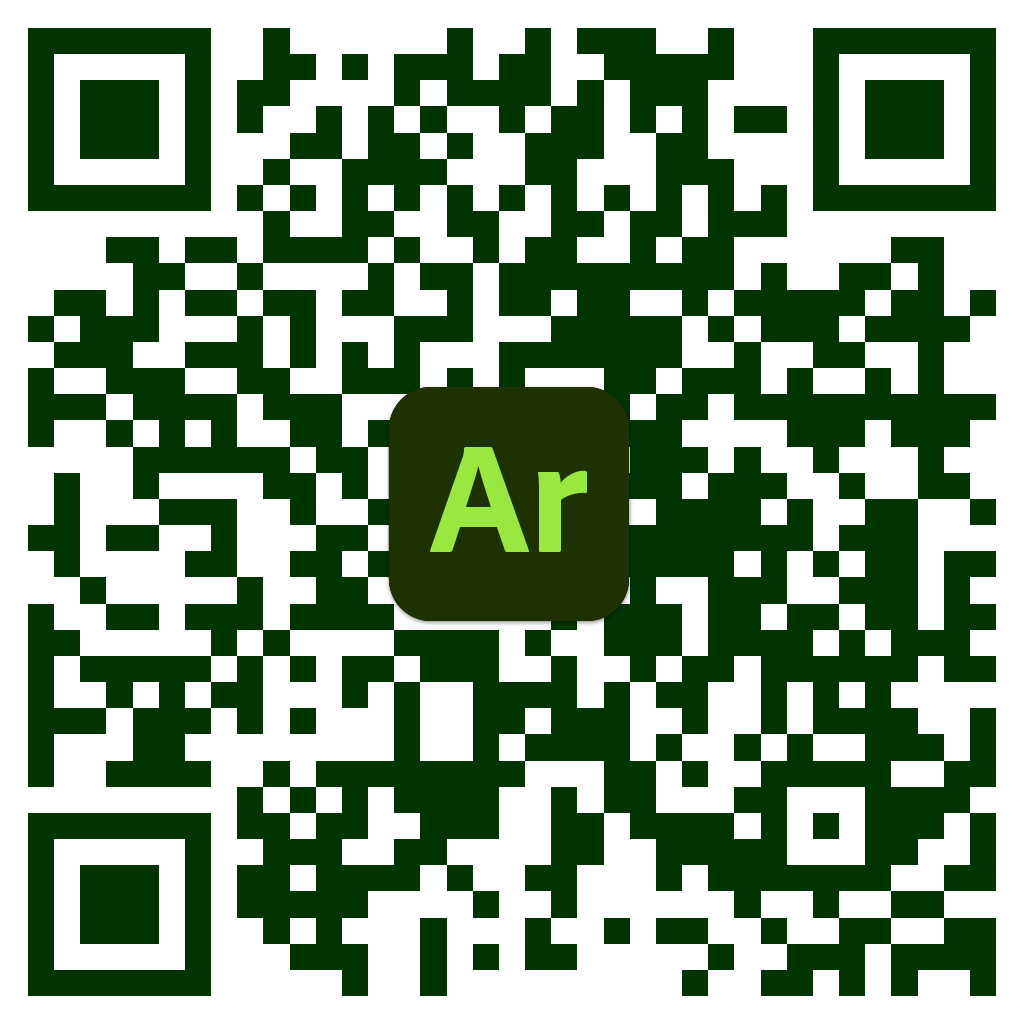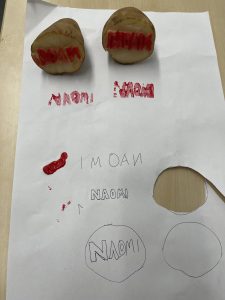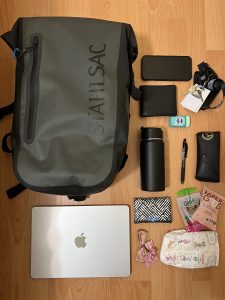[06:43] “Just because people talk differently, doesn’t necessarily mean they think differently, because it could be that everyone pays attention to all the same things, everyone remembers all the same things but just chooses different elements to talk about.”
After hearing this, I was reminded of a Sunday school class where we learned about the word ‘love’ and how Greek has many words to express different types of love. The three that stand out to me are: Agape, which is often defined as unconditional, sacrificial love; Eros, which refers to physical love or sexual desire; and Philia, which denotes affectionate, platonic love.
This distinction in Greek underscores how different cultures conceptualize and express emotions. In English, however, we use a single word, ‘love,’ to encompass a wide range of feelings and relationships. Despite this linguistic limitation, I don’t believe it fundamentally alters how we perceive and understand love. When I say I love my daughter, the context and the depth of emotion are clear, just as when I say I love hamburgers, the casual, less intense affection is understood. The richness of our experiences and the context in which we use the word allow us to convey these different kinds of love without needing multiple words.
This suggests that while language shapes our expression of thoughts and feelings, it does not entirely define them. Cultural context and personal experiences play significant roles in how we interpret and understand these expressions. Thus, even with a single word for ‘love’ in English, we can still navigate the complexities of this emotion effectively.
[10:28] Dr. Boroditsky says “Do people who speak different languages think differently?”
I found this question very interesting. I believe language is closely tied to a person’s culture. For example, the Japanese language is deeply rooted in Japanese culture, and it is culture, rather than language, that influences different ways of thinking.
I’ve recently been watching the television series Shogun, which provides a vivid illustration of these cultural differences. Throughout the series, many instances highlight how Japanese thinking differs significantly from that of the European characters. One striking example is the concept of Seppuku, a form of ritual suicide considered honourable in Japanese culture. This act is rooted in a complex system of values emphasizing honour, duty, and the collective over the individual.
The question arises: if someone learned to speak Japanese but did not grow up within Japanese culture, would they also view Seppuku as honourable? I think the answer lies in the deep interconnection between language and culture. Language is not just a tool for communication but a vessel carrying the values, beliefs, and norms of a culture.
For someone to truly understand the concept of Seppuku and view it as honourable, they would need to be immersed in the cultural context that gives this practice its meaning. Simply speaking the language might not be enough. Cultural upbringing shapes how individuals interpret concepts and behaviors. Without experiencing the social and cultural context of Japan, an individual might understand the literal meaning of Seppuku but not internalize its significance as an honorable act.
This ties into a broader understanding of how language and culture interplay. Language provides the framework for expressing cultural values, but it is the lived experience within a culture that ingrains these values in individuals. Learning a language can offer insights into a different worldview, but deep cultural understanding often requires more than linguistic proficiency—it demands immersion and experience within that culture. Dr. Boroditsky’s example of the Aboriginal community of Pormpuraaw, whose members can precisely point southeast without hesitation, illustrates the deep connection between language and culture. This ability is not just a linguistic skill but is deeply rooted in their cultural practices and worldview.
[18:28] “When you teach people to talk a new way, you’re teaching them to think a new way as well. That tells us that language has this causal power, you can change how people think by changing how they talk.”
I think this quote is important because, as a Canadian educator working towards truth and reconciliation, I strive to teach my students about Canada’s past mistreatment towards Indigenous people. It highlights how settlers attempted to change Indigenous ways of thinking by forcing them to learn English in residential schools. It also underscores the significance of Indigenous communities reclaiming their languages and sharing them with younger generations, thereby preserving their cultural identity and reshaping their worldview.
[20:10] Dr. Boroditsky discusses how certain languages assign grammatical gender to nouns, a topic I find particularly intriguing as an educator committed to promoting inclusivity. This raises an important question: are gendered languages associated with gender inequality?
She gives examples of languages that involve categorizing nouns as masculine or feminine and these structures can influence how speakers perceive and interact with the world. Research suggests that the way gender is embedded in language can affect cognitive processes, potentially reinforcing gender stereotypes and biases.
For example, in languages with grammatical gender, people might unconsciously associate certain attributes with masculine or feminine qualities based on the gender of the noun. This can perpetuate traditional gender roles and influence how individuals perceive the capabilities and characteristics of men and women. In educational settings, such linguistic influences can shape students’ attitudes and expectations about gender, potentially limiting their aspirations and reinforcing inequality.
As we strive for greater inclusivity, it’s essential to examine how language influences thought and behavior. While grammatical gender is a linguistic feature and not inherently discriminatory, its impact on societal attitudes towards gender must be acknowledged. In contexts where gendered language may reinforce stereotypes, educators and policymakers can take steps to promote more inclusive language use.
[29:36] Dr. Boroditsky discusses how English does not strongly distinguish between accidents and intentional actions, and whether this affects how people remember or witness events. This observation is important because human memory is inherently selective, and the language we speak can shape what we remember. This has significant implications, especially in contexts like the legal system, where accurate recollection of events is crucial.
In languages that do distinguish more clearly between accidental and intentional actions, speakers might develop a sharper awareness of the causes and intentions behind actions. For example, in Spanish, there are distinct ways to describe accidental versus intentional events, which might make Spanish speakers more attuned to the differences in these contexts. In English, however, the same event might be described with less emphasis on intent, potentially leading to different patterns of memory and recall.
This linguistic influence on memory becomes particularly relevant in legal settings, where the details of an event, such as whether an action was accidental or intentional, can be pivotal. Witnesses’ testimonies can be influenced by how questions are framed. For instance, asking, “Did you see him break the vase?” versus “Did you see the vase get broken?” might lead to different recollections of the event, emphasizing the action versus the outcome.
The way questions are posed can subtly guide witnesses toward recalling certain details over others, which can affect the accuracy of their testimony. This phenomenon underscores the need for legal professionals to be aware of the potential biases introduced by language. It also highlights the importance of precise and neutral questioning techniques to avoid inadvertently shaping witnesses’ memories.
Moreover, understanding the relationship between language and memory can inform the training of legal professionals. By recognizing how different linguistic structures might influence perception and recall, lawyers, judges, and jurors can better assess the reliability of witness testimonies. This knowledge can also support the development of guidelines and practices that minimize the impact of linguistic biases on the judicial process.
[34:00] Dr. Boroditsky discusses numbers in this section of the video, and when she showed an image of the body system for counting from Papua New Guinea, it reminded me of my experience in China. I was initially confused by certain hand gestures when using English and trying to buy something. I later learned that in China, they use different hand gestures for counting than what I grew up with in Canada.
In Canada, I learned to use all ten fingers to count, but in China, they use only one hand to count to ten, as shown in the picture below. This method developed because the other hand is often occupied, making it easier to gesture a number with one hand while the other might be holding a grocery bag or a child. This experience highlighted for me how cultural practices shape even the most basic aspects of our daily lives, like counting.






